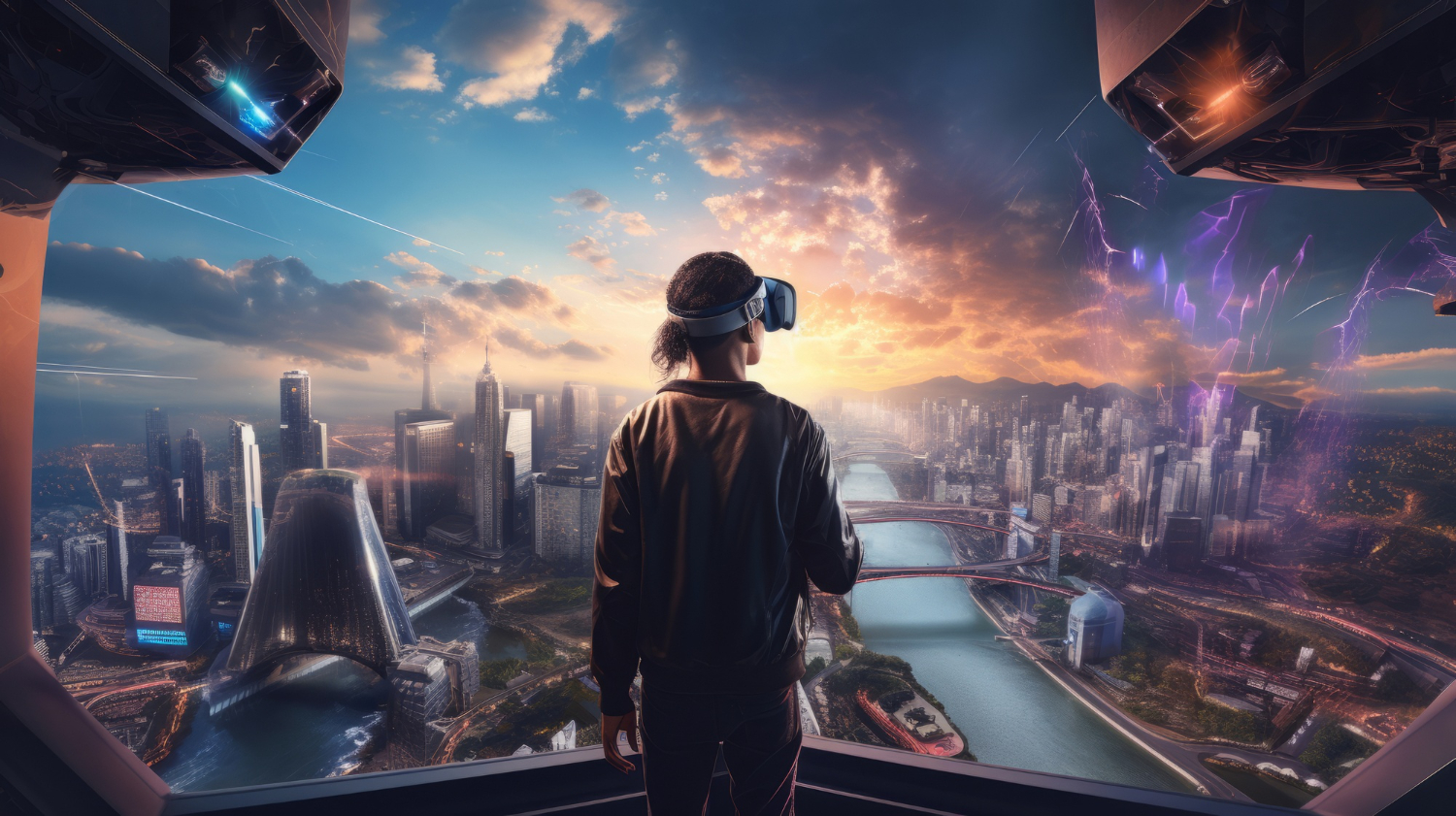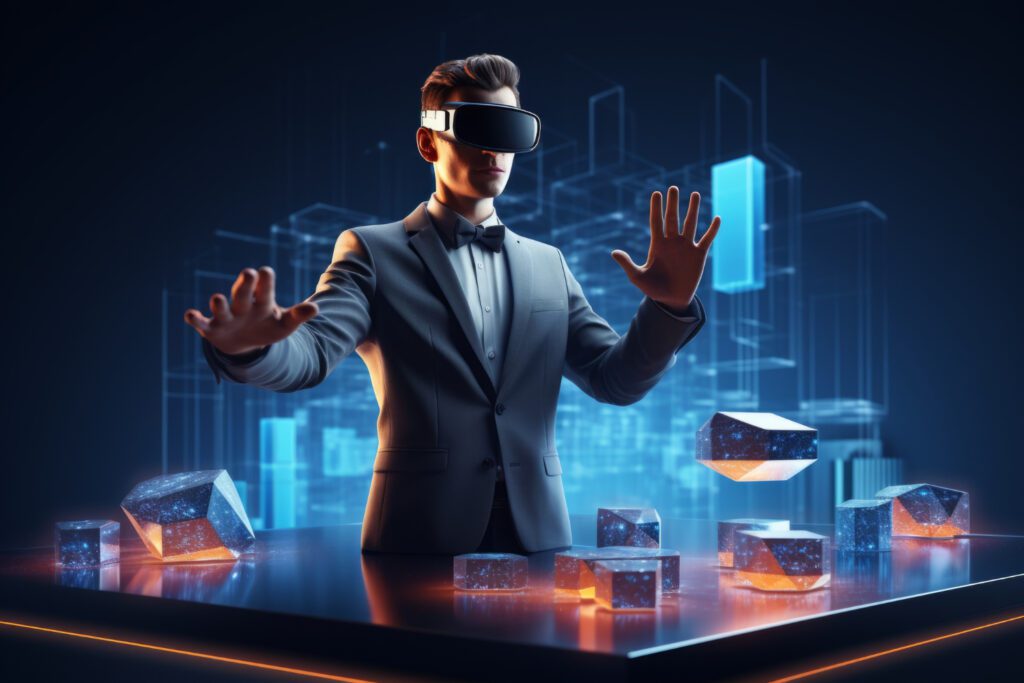
Hey there, we know you are here to deep dive into the future of virtual reality! Today, we’re embarking on an exhilarating journey through the corridors of time to uncover the awe-inspiring origin story of virtual reality, along with the forthcoming future of virtual reality (VR). So, fasten your seatbelts, and let’s dive into this mind-bending voyage!
Imagine stepping into a world where the line between what’s real and what’s not begins to blur, where you can roam freely through fantastical landscapes or engage in heart-pounding adventures—all from the comfort of your own home. It sounds like something straight out of a sci-fi flick, right?
Well, buckle up, because the reality of virtual reality is even more captivating than fiction.
The Genesis of a Digital Frontier

The future of virtual reality comes with an understanding of its origin, how it came into being, and how it’s going in today’s world. In the annals of technological history, few innovations have ignited the imagination quite like virtual reality (VR).
To understand the future of virtual reality, we must first journey back to the inception of virtual reality and trace its remarkable evolution.
The Origins: A Visionary Quest
Our journey into the genesis of VR takes us back to the swinging ’60s, a time when bell-bottoms were in and space exploration was all the rage. It was during this groovy era that the seeds of virtual reality were first sown.

Meet Ivan Sutherland, the visionary computer scientist who is often hailed as the father of VR. In 1968, Sutherland unveiled what would become the world’s first head-mounted display, fittingly named the “Sword of Damocles” due to its imposing appearance.
But it wasn’t until the 1980s that VR truly began to take shape, thanks to the pioneering efforts of Jaron Lanier and his company, VPL Research.
Lanier and his team developed a range of VR gadgets, including the eye-catching DataGlove—a wearable device that allowed users to interact with virtual environments using hand gestures. Suddenly, the concept of stepping into a digital realm didn’t seem so far-fetched anymore.
Sutherland’s “Sword of Damocles” and Krueger’s “Videoplace” were early originators of the immersive experiences we enjoy today, offering glimpses into a future of virtual reality where the boundaries between the physical and digital worlds would blur.
The Rise of Commercial VR: From Fiction to Reality

While early experiments in virtual reality were largely confined to academic and research institutions, it wasn’t until the late 20th century that VR entered the mainstream consciousness.
In the 1980s and 1990s, advancements in computer technology and graphics rendering paved the way for the development of commercial VR systems.
One of the most notable milestones during this period was the release of the Virtuality arcade machines in the early 1990s, which offered players the chance to experience immersive 3D gaming like never before.
Around the same time, companies like VPL Research and SEGA were pioneering VR hardware and software, bringing the dream of virtual reality one step closer to reality.
The Revolution Begins: Modern VR Takes Flight
Fast forward to the 21st century, and virtual reality has become more accessible and immersive. The introduction of devices like the Oculus Rift, HTC Vive, and PlayStation VR has ushered in a new era of consumer-friendly VR, allowing users to enter fully realized digital worlds from the comfort of their homes.

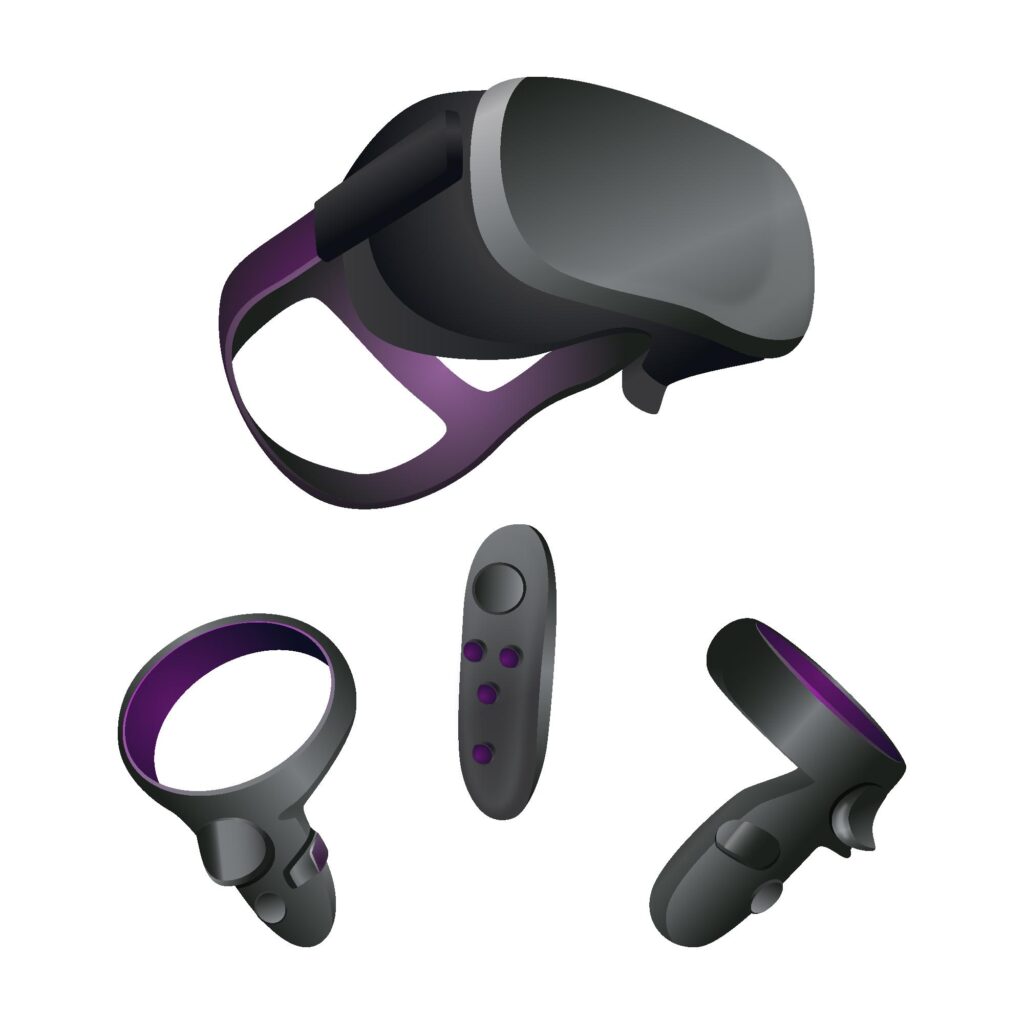

But VR is not just for gaming and entertainment. In recent years, we’ve seen technology find applications in fields as diverse as healthcare, education, architecture, and beyond. From virtual surgical simulations to immersive historical reenactments, the possibilities for VR are limited only by our imagination.
In the modern era, virtual reality (VR) has transcended the realm of science fiction to become an integral part of our everyday lives. From immersive gaming experiences to practical applications in fields like healthcare and education, VR has evolved into a versatile and transformative technology.
| Year | Milestones |
|---|---|
| 1938 | Antonin Artaud introduces the concept of the “Theatre of Cruelty.” which can be seen as an early precursor to virtual reality. |
| 1957 | Morton Heilig created the Sensorama, a mechanical device offering immersive experiences including sight, sound, and even smell. |
| 1965 | Ivan Sutherland developed the first head-mounted display (HMD) called the “Sword of Damocles,” laying the groundwork for modern VR technology. |
| 1968 | Ivan Sutherland and Bob Sproull created the first virtual reality head-mounted display system, known as the “Sword of Damocles,” which was tethered to a computer and allowed users to see simple wireframe rooms. |
| 1970s | Myron Krueger develops “Videoplace,” an interactive environment using video cameras and projectors, marking early experiments in virtual reality. |
| 1980s | Virtual reality research accelerates, with advancements in computer graphics and interactive technologies paving the way for commercial VR systems. |
| 1990s | Virtual reality becomes more accessible with the release of commercial VR systems like Virtuality arcade machines and devices from companies like VPL Research and SEGA. |
| 2010s | The modern era of virtual reality begins with the emergence of consumer-friendly VR devices such as the Oculus Rift, HTC Vive, and PlayStation VR. |
| Present Day | Virtual reality continues to evolve, with advancements in hardware, software, and applications across various industries. |
Let’s take a closer look at how VR is shaping the landscape of today’s world.
Immersive Entertainment: Gaming and Beyond
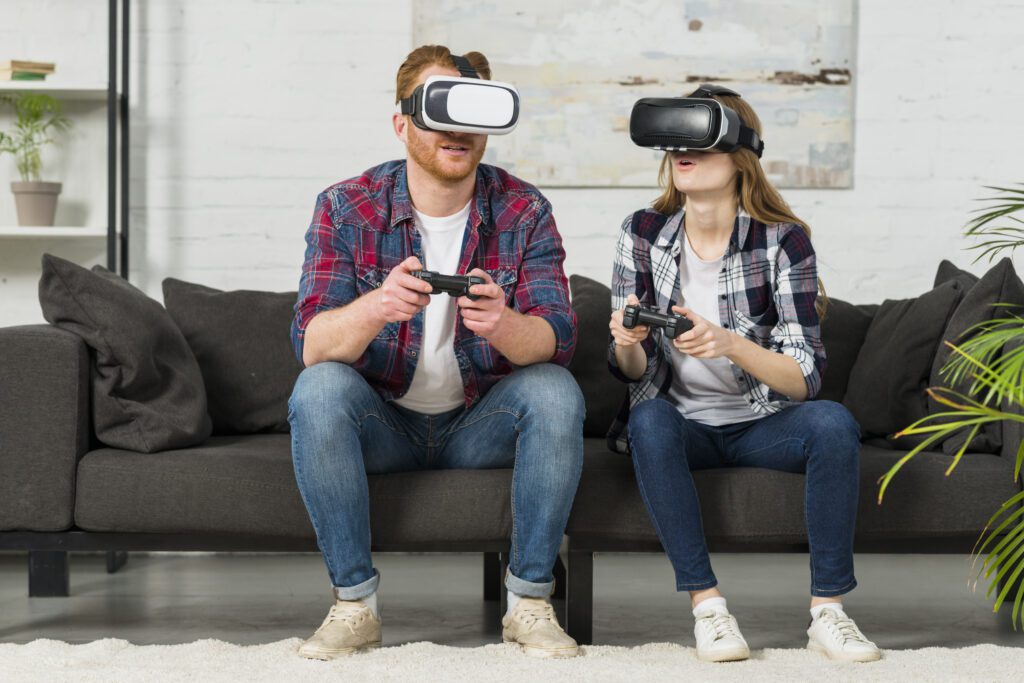
One of the most prominent domains where VR has made its mark is gaming. With devices like the Oculus Quest, PlayStation VR, and HTC Vive, gamers can now step into virtual worlds and experience gameplay like never before.
From heart-pounding action adventures to captivating puzzle games, the possibilities for VR gaming are virtually endless.
But VR’s influence extends beyond gaming. Virtual reality has also emerged as a platform for immersive storytelling, allowing users to become active participants in cinematic experiences and interactive narratives.
Whether exploring distant galaxies or unraveling the mysteries of ancient civilizations, VR transports audiences to new realms of imagination and wonder.
Practical Applications: Transforming Industries

Beyond entertainment, VR is revolutionizing various industries by offering innovative solutions to real-world problems.
In healthcare, VR is being used for everything from surgical simulations to pain management therapies.
By providing a safe and controlled environment for training and treatment, VR is helping to improve patient outcomes and enhance medical education.
In education, VR is opening new doors for experiential learning. Students can explore historical landmarks, dissect virtual organisms, and engage in collaborative problem-solving exercises—all from the comfort of their classrooms.
By bringing learning to life in immersive and engaging ways, VR has the potential to revolutionize the educational experience for students of all ages.
Remote Collaboration: Bridging Distance with Immersion

In an increasingly interconnected world, VR is also playing a crucial role in facilitating remote collaboration and communication.
With virtual meeting platforms like Spatial and AltspaceVR, teams can come together from around the globe and collaborate in virtual environments that mimic the experience of being in the same room.
From brainstorming sessions to product demos, VR is breaking down barriers and enabling seamless collaboration across distances.
A Glimpse into the Future of Virtual Reality
What once seemed like science fiction is now an integral part of our digital landscape, transforming how we perceive and interact with the world around us. But what lies ahead for this captivating technology and the future of virtual reality?
The major tech firms are already at work creating headgear that displays images in high definition and does not require cords. Virtual reality headsets with 8K screens and significantly more powerful processors are being developed.

There is even discussion about integrating artificial intelligence over the next few years. The most recent 5G standard may also offer some quite intriguing possibilities for how VR can develop.
Large user communities and more gadgets will be able to connect thanks to this standard. Furthermore, customers will be able to get images in real-time, virtually as if they were seeing them with their own eyes, because of its very undetectable latency.
Unveiling the Evolution: From Novelty to Necessity

Virtual reality has come a long way since its inception, evolving from clunky headsets to sleek, immersive experiences. Today, VR is not just a tool for gaming and entertainment; it’s making waves in industries ranging from healthcare to education and beyond.
But the journey doesn’t end here. The future of virtual reality promises even more remarkable advancements that will redefine our understanding of reality itself.
The Power of Immersion: Bridging the Physical and Digital Worlds
One of the most compelling aspects of VR is its ability to transport us to new and fantastical realms.
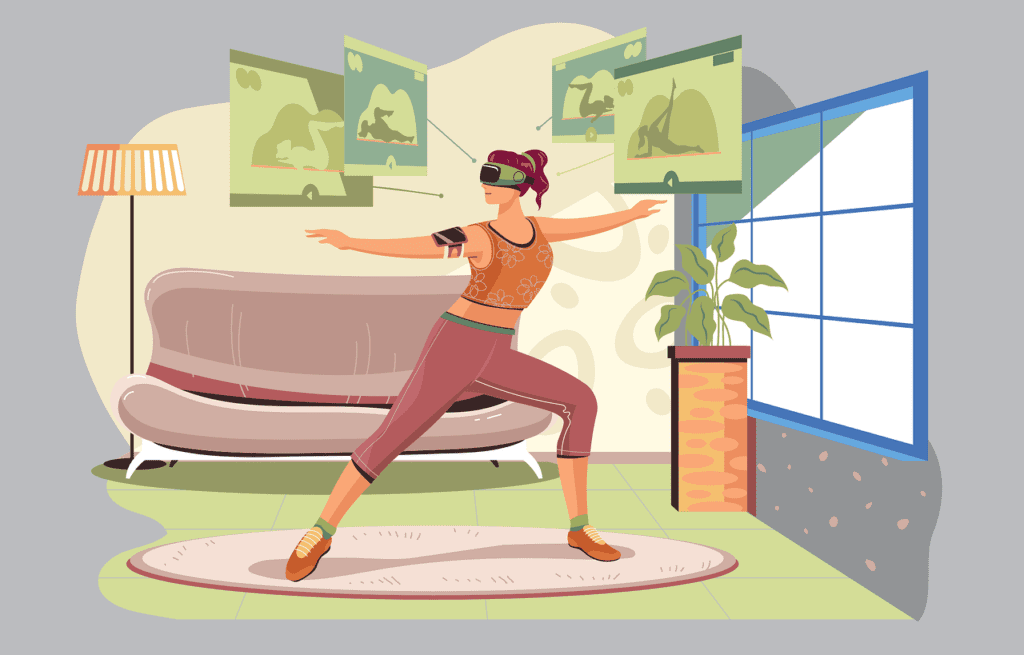
As technology continues to advance, the line between the physical and digital worlds will blur even further, offering experiences that are indistinguishable from reality.
Imagine walking through ancient ruins, exploring distant planets, or conversing with friends halfway across the globe, all from the comfort of your living room. The possibilities are limitless.
Beyond Entertainment: The Practical Applications of VR

While VR has long been associated with gaming and entertainment, its potential reaches far beyond mere escapism.
In healthcare, VR is revolutionizing patient care, offering immersive therapies for everything from PTSD to chronic pain management.
In education, VR is opening new doors for experiential learning, allowing students to explore historical events, dissect virtual organisms, and engage in collaborative problem-solving like never before.
Immersive Learning Experiences:
VR provides immersive environments that can transport students to historical events, far-off places, or even inside the human body for biology lessons.
By experiencing content in three dimensions, students can gain a deeper understanding of complex concepts and engage with the material in a more meaningful way.
Access to Remote Learning Opportunities:

VR can bridge geographical barriers and provide access to educational resources and experiences that might otherwise be out of reach.
Students in remote areas or with limited resources can benefit from virtual field trips, guest lectures, and collaborative projects that connect them with experts and peers from around the world.
Enhanced Engagement and Motivation:

The immersive and interactive nature of VR makes learning more engaging and memorable for students.
By transforming passive learning experiences into active ones, VR can spark curiosity, foster creativity, and inspire a love of learning that extends beyond the classroom.
Cost-effective training and professional development:
In addition to K–12 education, VR has the potential to revolutionize training and professional development across various industries.
From medical simulations and virtual laboratories to corporate training programs and skills development initiatives, VR offers a cost-effective and scalable solution for hands-on learning experiences.
And in the realm of business, VR is transforming how we collaborate, train employees, and conduct meetings in an increasingly globalized world.
Virtual Meetings and Collaboration:

VR has the potential to transform the way businesses conduct meetings and collaborate across distances.
Virtual meeting spaces can simulate physical environments, allowing team members from around the world to come together in immersive, interactive settings.
From brainstorming sessions and project reviews to training workshops and virtual trade shows, VR enables seamless communication and collaboration regardless of geographical barriers.
Virtual Training and Simulation:
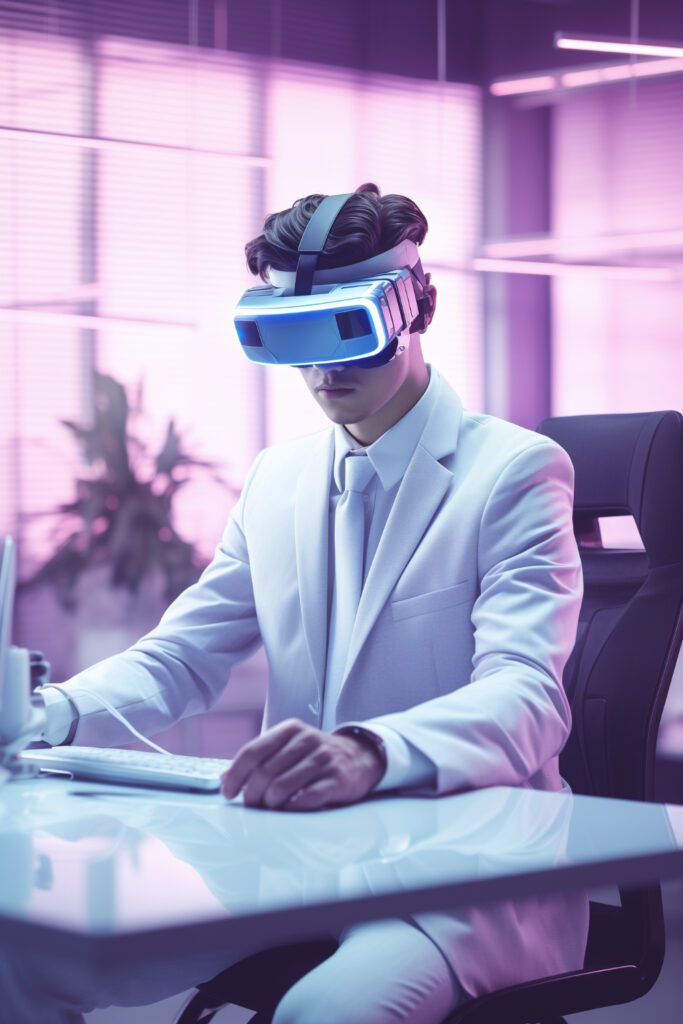
VR is revolutionizing employee training and skill development by providing realistic simulations and immersive learning experiences.
From safety training in hazardous environments to hands-on practice in complex procedures, VR enables employees to learn by doing in a safe and controlled environment.
This not only improves retention and engagement but also reduces the need for expensive physical training facilities and equipment.
Product Design and Prototyping:
VR is transforming the product design process by enabling designers to create, visualize, and iterate on concepts in virtual environments.
Virtual prototyping allows businesses to test and refine product designs quickly and cost-effectively, reducing time-to-market and minimizing the risk of errors or defects.

VR also facilitates collaboration between designers, engineers, and stakeholders, leading to more innovative and user-centric products.
Data Visualization and Analytics:
VR provides powerful tools for data visualization and analytics, allowing businesses to explore and interact with complex datasets in immersive, intuitive environments.
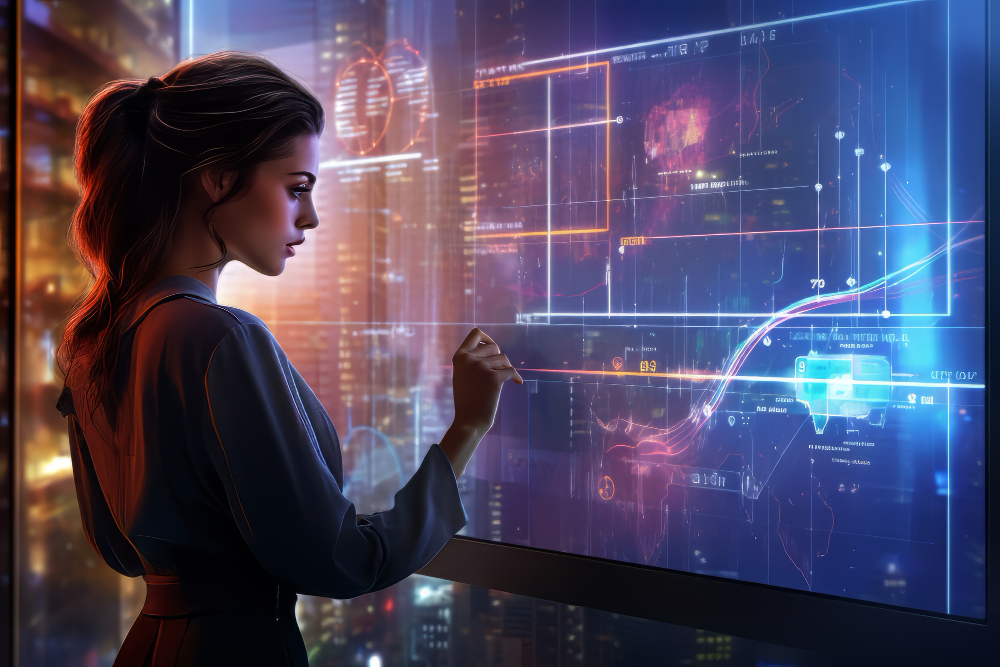
From visualizing sales trends and market forecasts to exploring 3D models of customer behavior and product performance, VR enables deeper insights and more informed decision-making.
This can lead to better strategic planning, optimized operations, and improved business outcomes.
Challenges and Opportunities: Navigating the Road Ahead

Of course, the path to the future is not without its challenges. From technological barriers to ethical considerations, there are numerous hurdles to overcome.
But with each challenge comes an opportunity for innovation and growth, and we can say that the future of virtual reality is going to be unimaginable.
As we continue to push the boundaries of what is possible, the future of virtual reality holds immense promise for those willing to embrace it.
In addition to the above, the future of virtual reality (VR) in daily life is quite promising, and it’s going to be both exciting and transformative, with VR technology poised to integrate seamlessly into various aspects of our everyday experiences.
Entertainment and media consumption:

Although various tools provide VR experiences, VR will soon revolutionize how we consume entertainment, offering immersive experiences that go beyond traditional forms of media.
From virtual concerts and live events to interactive storytelling and immersive films, VR will enable us to escape into virtual worlds and engage with content in entirely new ways.
Social Interaction and Communication:
VR will redefine how we connect with others, providing immersive platforms for socializing, gaming, and collaboration. Imagine you are in some other city, and your friend or family is in another.

Instead of video calling or face-timing them, you’ll be able to interact with them virtually, where you’ll experience a real, lifelike feeling. You can go for a walk or play some games together, making you feel connected with them.
Virtual social spaces will enable us to meet up with friends, attend virtual parties, and participate in shared experiences, regardless of geographical distance.
VR will also enhance remote communication, allowing us to feel more present and engaged during video calls and virtual meetings.
Also read about The Power of AI: Unleashing Its Effectiveness In The Best 5 Sectors
Health and Wellness:
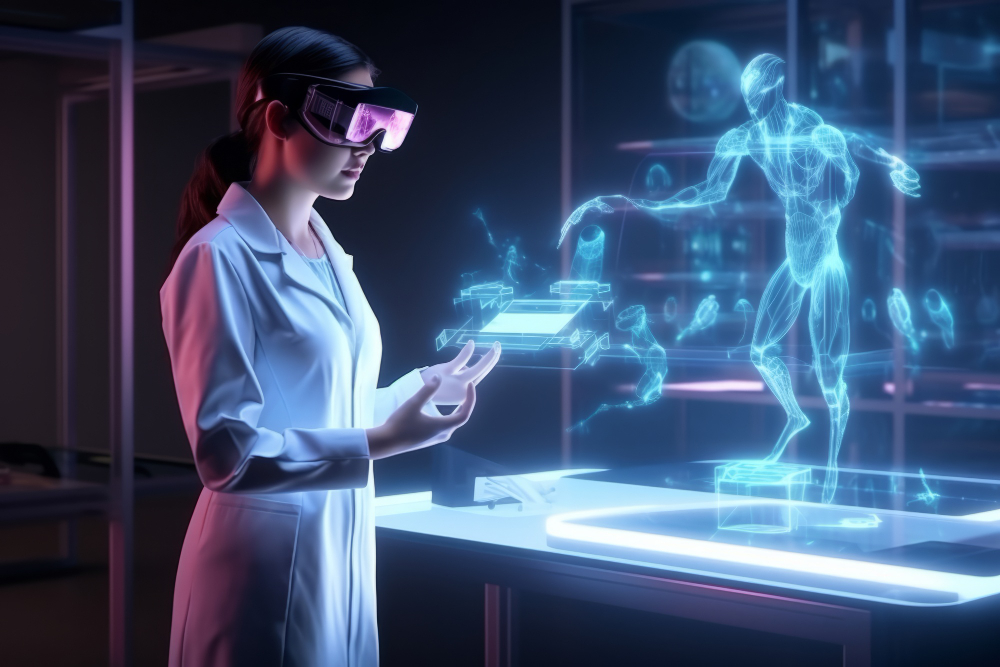
VR will play an increasingly important role in healthcare and wellness, offering immersive experiences for relaxation, meditation, and stress relief.
Virtual reality therapy will become more common for treating mental health conditions such as anxiety and PTSD, providing patients with immersive environments for exposure therapy and mindfulness exercises.
Travel and Exploration:
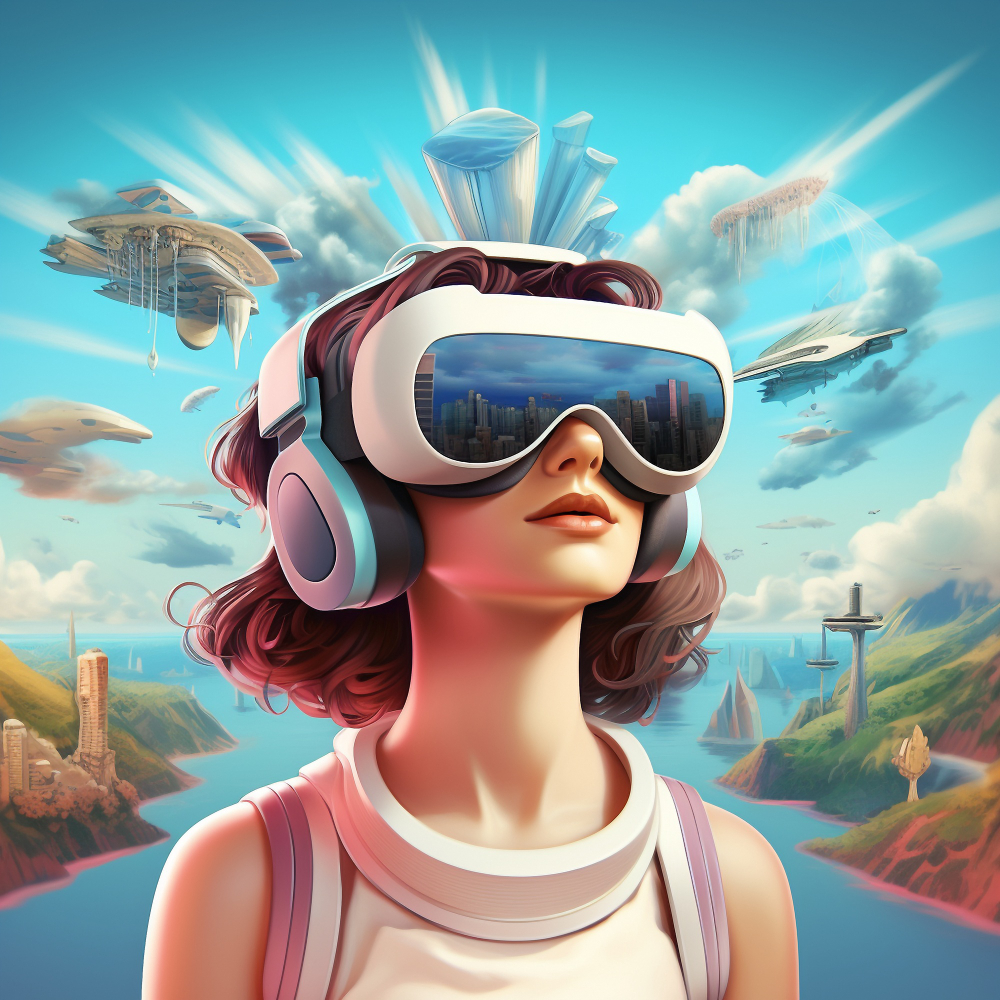
The future of virtual reality will open up new possibilities for travel and exploration, allowing us to visit distant destinations and experience different cultures without leaving our homes.
Virtual travel experiences will enable us to explore natural wonders, historical sites, and iconic landmarks in immersive 360-degree environments.
Through this, you’ll be able to explore unvisited historic places, such as the underwater Dwarka Nagri, the unexplored Amazon forest, and many more.
Shopping and Commerce:
VR will transform how we shop and engage with brands, offering virtual storefronts, immersive product demos, and interactive shopping experiences.

Virtual reality shopping malls will enable us to browse and purchase products in 3D environments, while virtual try-on tools will allow us to visualize how clothing and accessories look on our avatars before making a purchase.
Conclusion: Embracing the Unknown
In closing, the future of virtual reality is a journey into the unknown, a tantalizing glimpse into what lies beyond the confines of reality as we know it.
As technology continues to evolve and our understanding of the world expands, VR will undoubtedly play a pivotal role in shaping the way we live, work, and play. So let us embrace the possibilities, dare to dream, and venture boldly into the virtual unknown.
Join us next time as we explore another fascinating topic at the intersection of technology and human imagination. Until then, keep dreaming and keep exploring.


